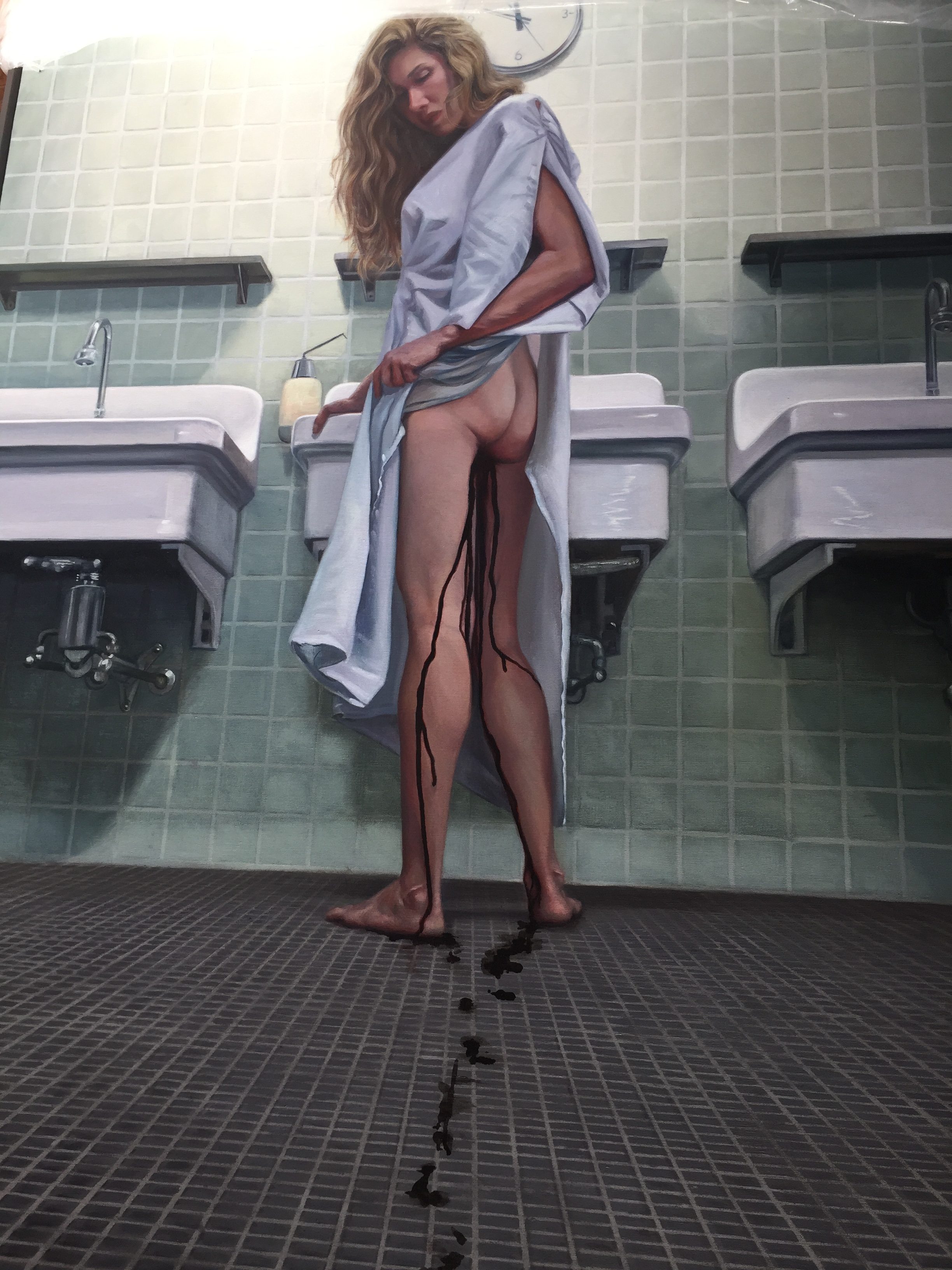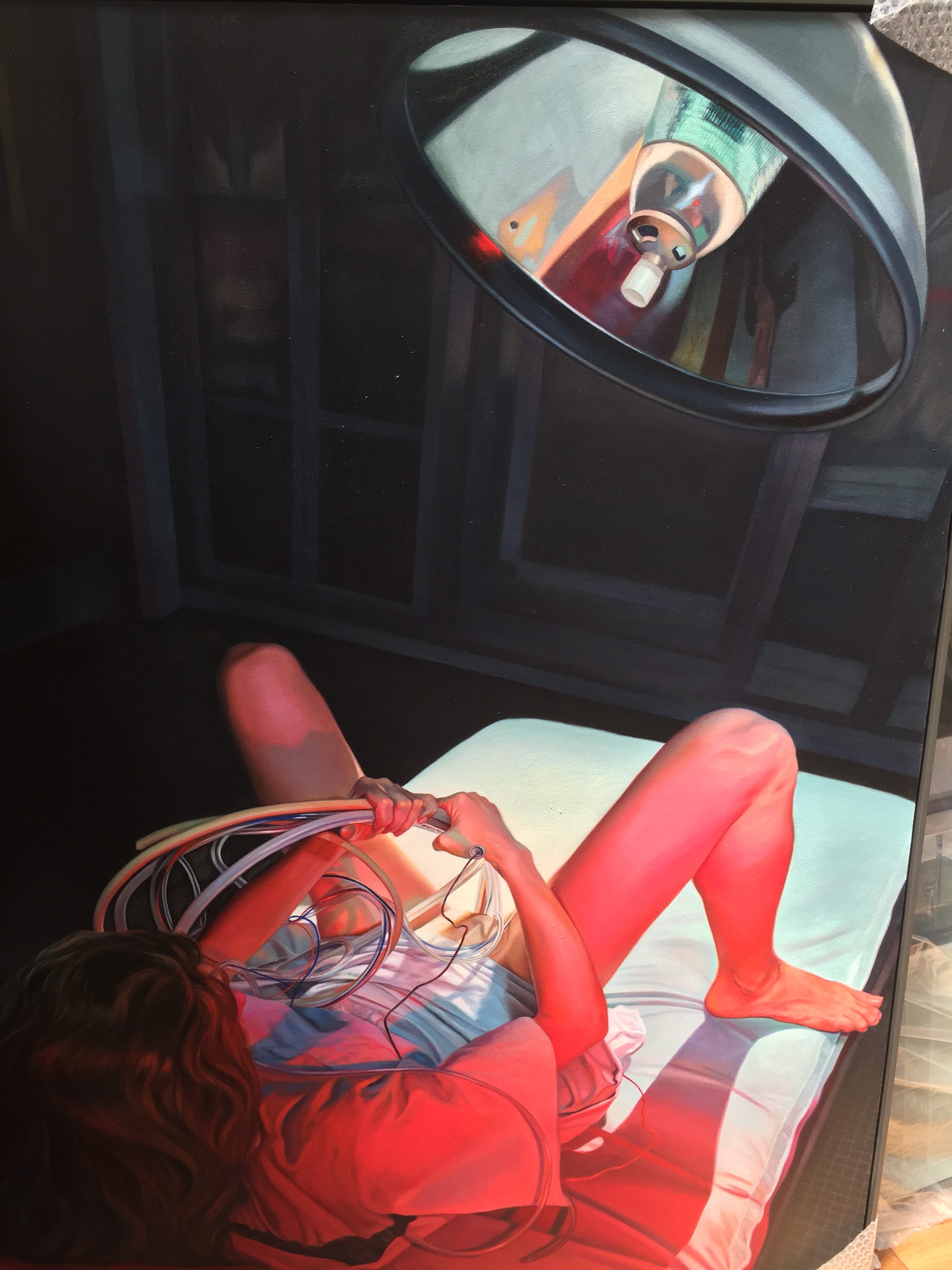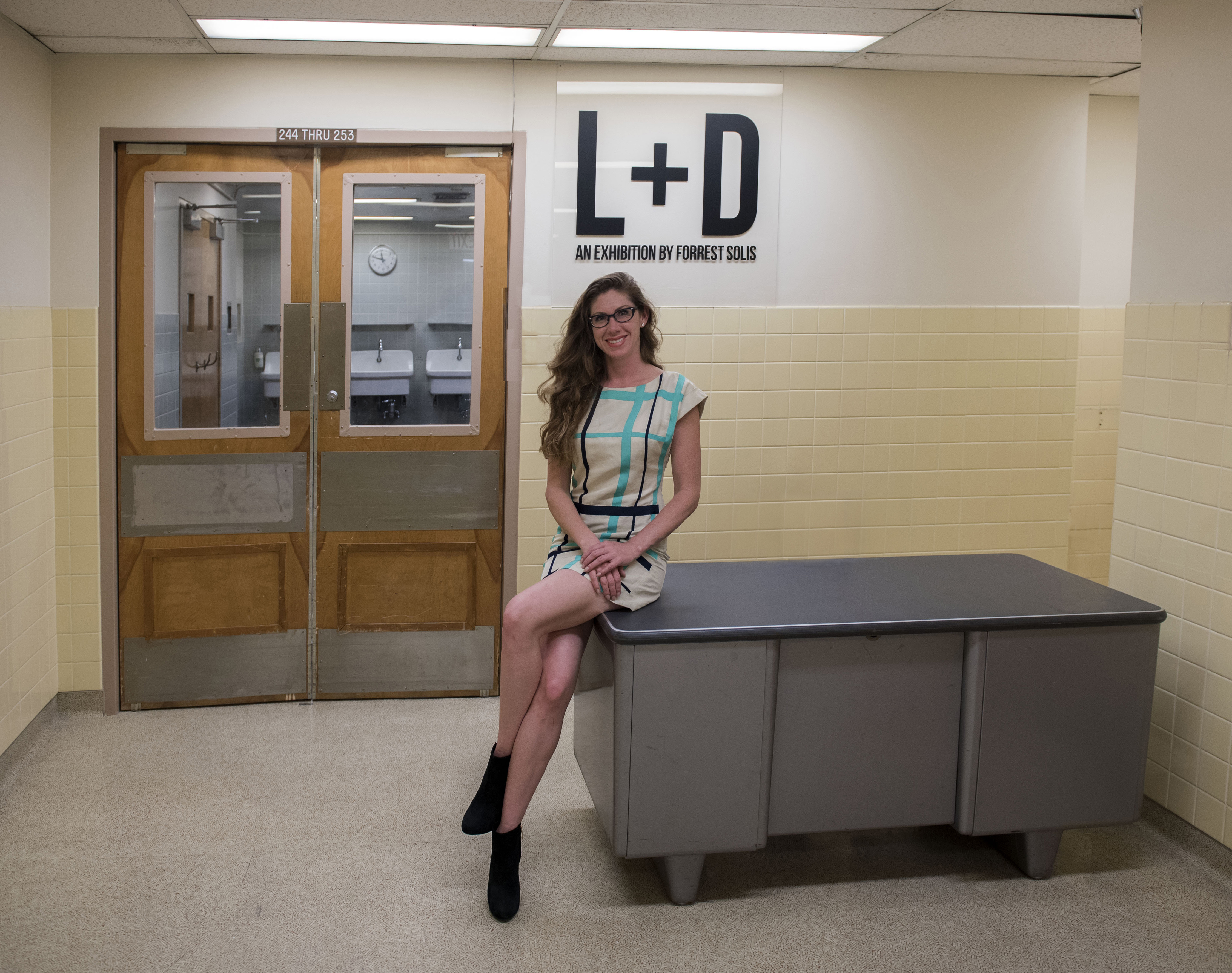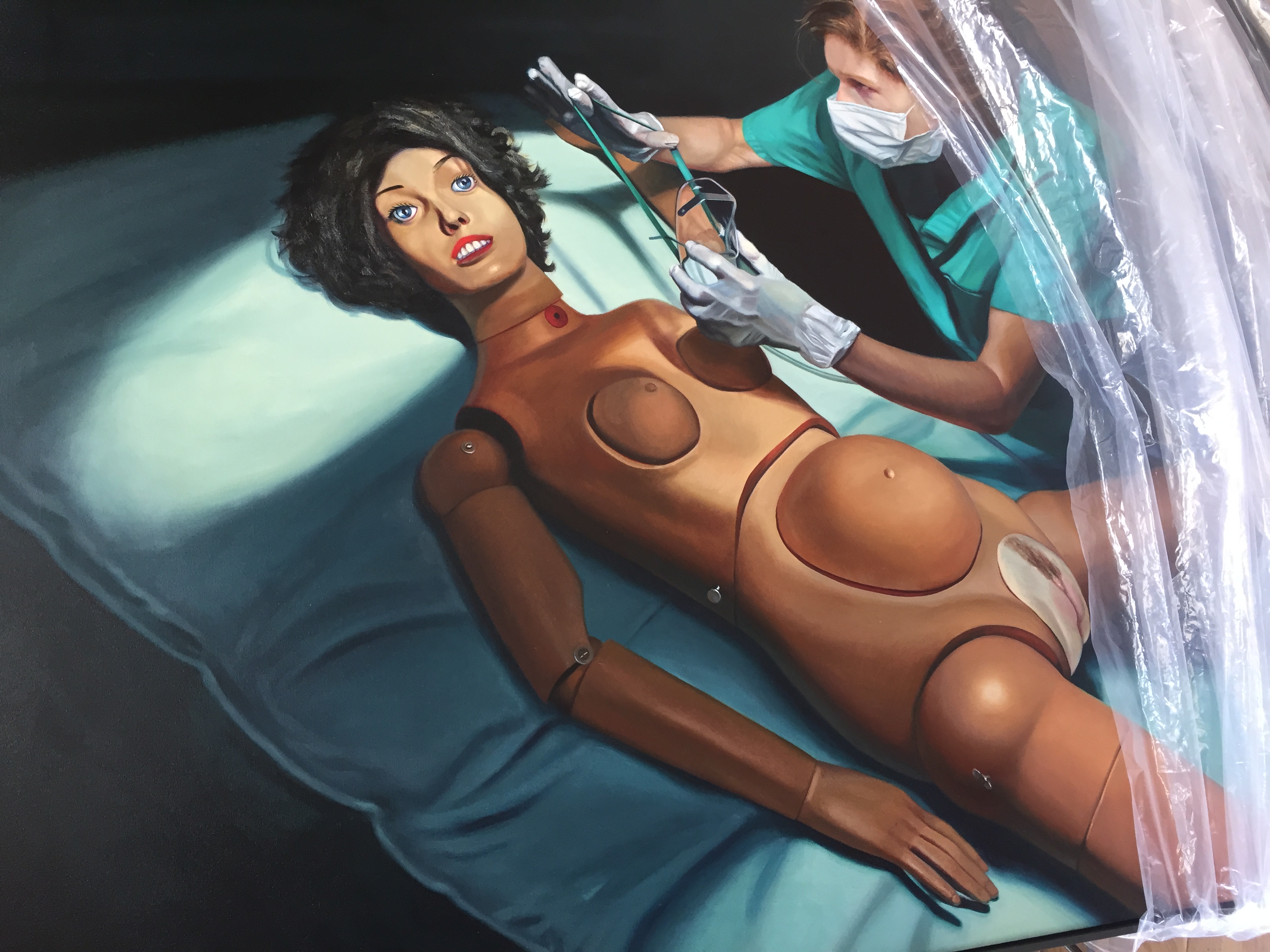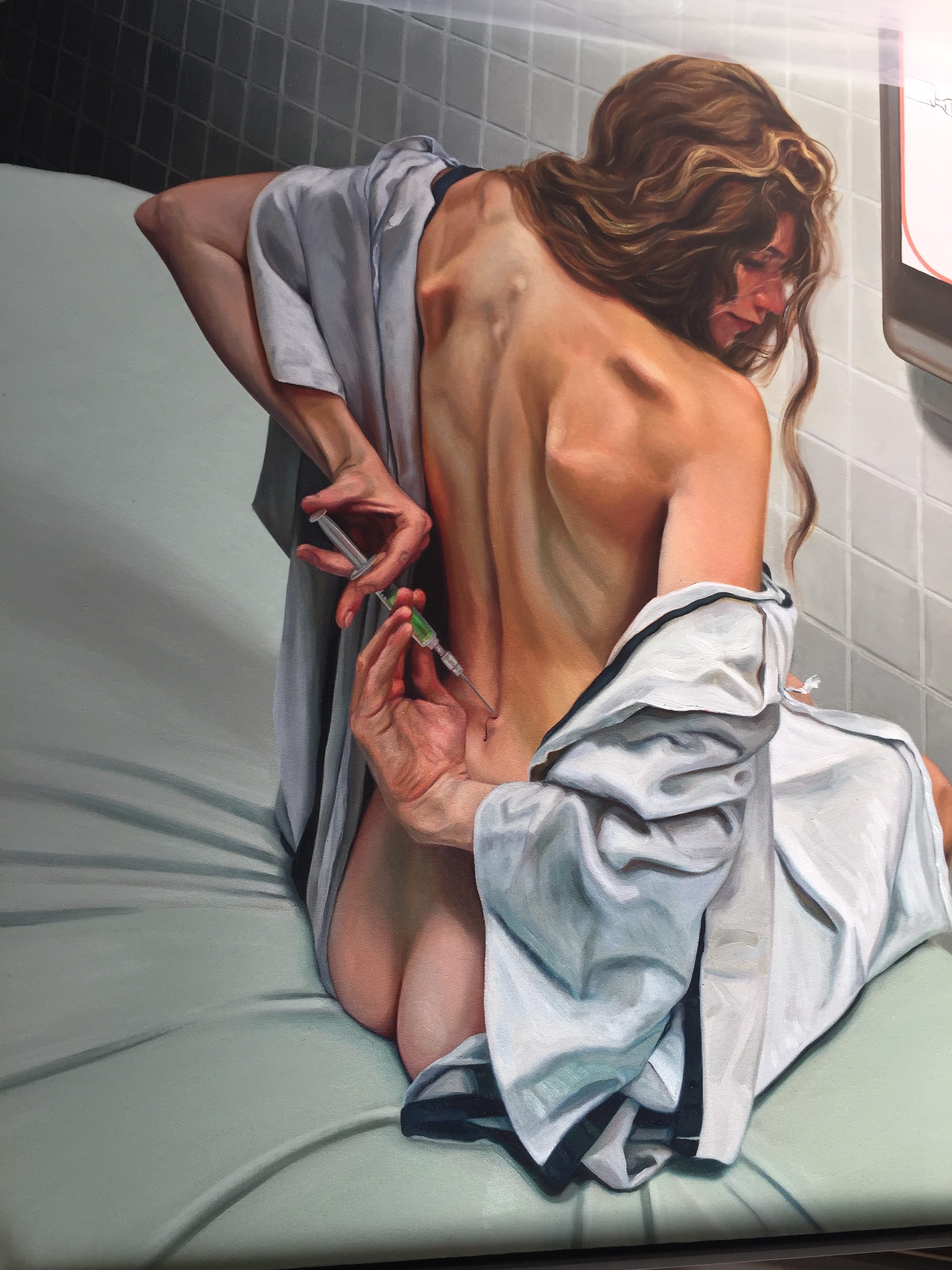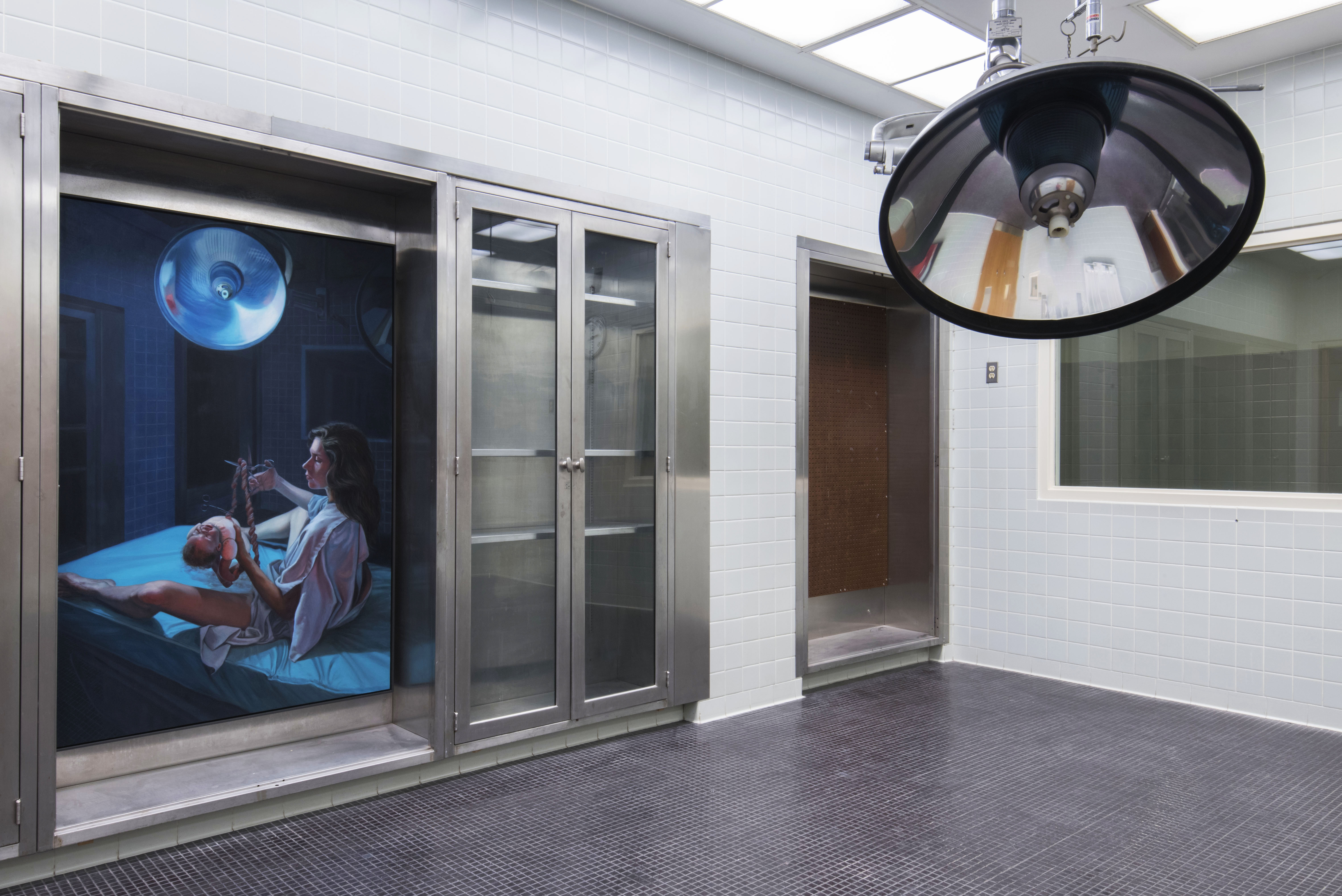Fake corporate holidays pollute our calendar the same way corporations pollute everything in our world. Some are culturally appropriated pretexts for binge drinking and others decades-long Hallmark marketing campaigns. Yet, when Mother’s Day rolls around, how can you not pause and give thanks to the women who incubated you in that little condo of her belly, rent-free, for forty weeks or so. “Every single person has a birth story,” Forest Solis reminds me while we sit in her artist’s studio, “if you haven’t given birth, you’ve been born.”
Wind chimes sing through the open window while Solis’s collection of Born-Again figurines stare down with their dead doll eyes. The pigment-smattered room overflows with massive paintings. In one, Solis births bundles of cables and tubes. In another, a spread-eagle organic mannequin receives an episiotomy, which, for those who don’t know, is when a doctor or midwife makes an incision from the vagina to the anus in the second stage of labor.
Solis doesn’t shy away from the realities of birth. Her project, Creative Push, exists to document and share women’s experience of childbirth. This Saturday, May 13th at 11:30 AM at the Heard Museum, Creative Push presents the short film Our Creation Stories, featuring the birthing stories of five Native American women from around Arizona (Watch trailer here). After, they conduct a panel discussion with Nicolle Gonzales, a certified nurse-midwife, Renee Dennison, an artist and videographer who works with Creative Push, and Patrisia Gonzales Ph.D., who wrote Red Medicine: Traditional Indigenous Rites of Birthing and Healing. FYI, there is no charge or entrance fee for the event.
Image by Peter Bugg
After giving birth to her son, Solis began exploring artwork about birth. She was not happy with what she saw. “Honestly, I couldn’t find anything that wasn’t total cheese ball work about how beautiful the experience is, or how it’s about the universe, all these silly notions which are really idealized.” Solis isn’t interested in sanitized narratives that dryly count cervical dilations and always end with a yuppie couple driving home happily counting tiny fingers and toes. While touring a defunct children’s hospital with other faculty from the ASU School of Art, a vision came to Solis. “As soon I walked into the space of this abandoned surgery wing I was like this is my show,” she said, “and so I started the long process of making these eight large paintings.”
As she removed the plastic covers and de-dusted those same paintings, she explained the ideas and feelings she was exploring. “In many ways, our society still views the female figure as grotesque and that the things that it does are kind of grotesque as well. We’re always trying to clean up those things or beautify them in some way.” Solis wanted “to really embrace the physicality of the experience and to openly show a vagina, to show blood.” Solis wanted to show the lived experience of birth: warts, stretch marks, fluids, and all.
Several months before the show in the CDC Building, Solis contacted Ashley Czajkowski, than a graduate student at ASU. Together they began “this process of interviewing. We would find women at the senior center, at the grocery store, anywhere, and they would come here [her studio] and we would interview them.” This was the beginning of Creative Push. Czajkowski succinctly described Creative Push as “basically a combination of oral histories and art projects. We interview women talking about their birth experiences. After editing these into cohesive narratives, they are given to artists to create response works. The whole thing lives in a virtual galley where you hear the stories as you view the artwork.” (Here is the link if any of you are interested, just click one of the circular images to begin viewing/listening: Click Me!).
Well over a hundred interviews later, having traversed the state more times then either Solis or Czajkowski could easily recall, they realized “roughly twenty-five percent of our archive is Native American birth stories.” Solis continued, “we were travelling to different reservations and meeting women at a trading post, you know, or at the convenient mart or walking around outside and just approaching. I’m just awe struck by how open kind, caring, and generous the people are. They would have us into their homes. They would feed us. It was really incredible.”
While Solis originally intended to not divide subjects by age, race, or any of the other categories humans use to partition themselves, the Heard, focused on Native American issues and subjects, was interested in working with them. Solis contacted artist and videographer Renee Dennison, who is Dene (Navajo) and studying at ASU. They discovered Dennison’s work after interviewing her mother and sister for the project. Czajkowski recalled how they were “moved and impressed” by what they saw. They asked Dennison if she would be interested in collaborating and she said yes.
“I’m really interested in this idea of events and engaging an audience in a different way than your typical gallery set up,” Solis explained as she queued up the trailer for the film, Our Creation Stories, being presented this Saturday at the Heard. Dennison’s videos, taken around her home in the Navajo Nation, are contemplative. A chimney billows smoke on a cold morning. A shadowy figure crosses and re-crosses a field thickly coated in snow. Water trickles from a rough joint of wood. All the while, the voice of Charlinda Mueller relates her story, her voice wizened and warm, perfectly echoing the solemn beauty of the images.
This weekend, rather than fretting over a kitsch card or corn-syrup infused box of brown spheres and cubes, why don’t you pick up your mom and bring her to the Heard Museum, ignoring how she cringes every time you make a left turn. After that, maybe check out the Diego Rivera and Frida Kahlo exhibit or grab a coffee. Either way, ask your mom about your own birthing story. And, maybe, tell her how much you love and appreciate her.
Image by Peter Bugg
Jeff Kronenfeld is gainfully employed by the Poisoned Pen. He has stories featured in The Sharpened Quill, a recent collection of short stories by Phoenix-based authors. To order, click here. Feel free to send all hate mail and love letters to him at [email protected] and he’ll definitely write you back. Or not.
For more Phoenix coverage that doesn’t suck, follow PHX SUX on Suckbook and that tweety website for Twits.
Read more from PHX SUX:

